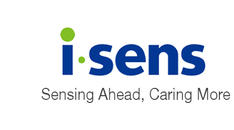
Blood Pressure Monitoring During Pregnancy
Disorders related to high blood pressure (ie, hypertension) during pregnancy are the leading causes of illness and death for both mothers and babies.1 Understanding blood pressure and regularly monitoring it are important to having a safe pregnancy.
What Is Blood Pressure?
The heart is constantly beating to supply oxygen-rich blood to all the organs and tissues in the body.2 The pressure experienced by large arteries in the body with each heartbeat can be measured with a blood pressure meter. Blood pressure is measured in two different numbers: systolic blood pressure, or the “top number”, and diastolic blood pressure, or the “bottom number”.3 For instance, if someone’s blood pressure reading shows 120/82 mm Hg, it is read as “120 over 82” and refers to a systolic blood pressure of 120 mm Hg and a diastolic blood pressure of 82 mm Hg.
How Often Should Blood Pressure Be Monitored During Pregnancy?
The current guidelines suggest that pregnant women should have their blood pressures checked by an obstetrician-gynecologist at every prenatal visit.5
A vast number of changes that occur with pregnancy, with cardiovascular (heart and blood vessel-related) changes being one of them.4 Hormonal changes in the mother facilitate cardiovascular adaptations leading to increased blood volume, dilation of blood vessels, and increases in heart rate, among others. Any dysfunction to this adaptive process can disrupt blood pressure. As unmanaged hypertension can lead to more severe complications and is associated with higher rates of illnesses and deaths for both mothers and babies, frequent monitoring is recommended. Blood pressure may be monitored more frequently or self-monitored daily based on whether blood pressure related issues are experienced.6
What Are Blood Pressure Related Disorders in Pregnancy?
Chronic Hypertension – Chronic hypertension in pregnancy is when hypertension has been diagnosed before pregnancy or is detected before 20 weeks of gestation.7 When hypertension first presented during pregnancy does not resolve after pregnancy, chronic hypertension can also be diagnosed. It is typically defined as having a systolic blood pressure of >140 mm Hg and/or a diastolic blood pressure of >90 mm Hg.
Gestational Hypertension – Gestational hypertension is when hypertension is detected after 30 weeks of gestation in a woman with previously normal blood pressure.6 It is typically defined as having a systolic blood pressure of >140 mm Hg and/or a diastolic blood pressure of >90 mm Hg on two difference occasions, at least 4 hours apart. Women with gestational hypertension are recommended to be monitored weekly.
Preeclampsia – Preeclampsia is a blood pressure-related disorder in pregnancy.6 It usually occurs later in the pregnancy and is diagnosed when a pregnant woman >20 weeks of gestation has a new-onset hypertension with one or more of the following new-onset symptoms:2
- Proteinuria (ie, elevated levels of protein in urine)
- Dysfunction of end-organs such as acute kidney injury, liver injury, fluid build-up in the lungs, neurological complications (eg, severe headache), blood count complications (eg, low platelet count)
- Dysfunction of the uterus or placenta (eg, placental abruption, fetal growth restriction)
|
References: |
(Disclaimer)
The content of this article is intended to provide a general information and knowledge on the subject matter. The views expressed in newsletters, articles, and blogs in the i-SENS USA website are not necessarily those of i-SENS Incorporated, i-SENS USA Incorporated or our publishers. Medical or nutritional information on i-SENS USA website is not intended to replace professional medical advice – you should always consult a specialist with any questions about your specific circumstances.





Add a comment